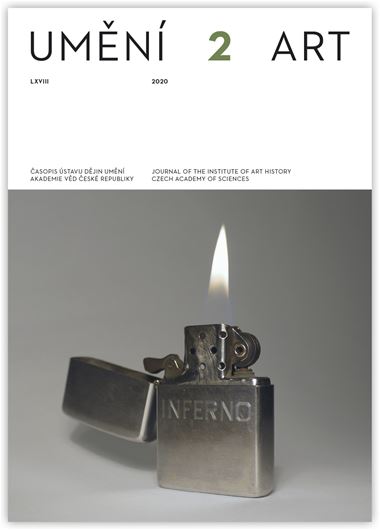Petr Uličný
A Difficult Mission. The Building of the St Vitus Cathedral in the Time of Ferdinand I and Anna Jagiellon (1526–1547)
The Cathedral of St. Vitus at Prague Castle, founded in 1344, was still incomplete when the Hussite Wars broke out. King Vladislav Jagiellon took up the project again in 1509, but soon afterwards work on it was halted, evidently because the construction of other parts of the castle fortifications was given priority. After being elected King of Bohemia in 1526, Ferdinand I of Habsburg clearly intended to renew work on the cathedral, and in 1530 — evidently under the direction of Benedikt Ried, he had a row of gables erected over the east choir. But then the building work lapsed again and the prospect of further progress was finally ruined by a great fire in 1541; after the fire the king could do no more than restore only the eastern choir, and he even substantially shortened the cathedral. Work was made difficult by a lack of funds, further complicated by Ferdinand’s unwillingness to look for potential sponsors in the ranks of the (Utraquist) nobility and burghers, without whose contributions an ambitious cathedral church could not be built in this era. It was largely the clergy who were left to restore or replace the damaged or lost furnishings and equipment. The size and form of the building were inadequate to the demands of an expanded royal court and especially the court of Queen Anna Jagiellon, for whose retinue of ladies a wooden platform had to be very awkwardly built into one of the chapels. It seems to have been for the queen, too, that Vladislav’s royal oratory was altered before 1537, by the installation of a heated wooden chamber. After the queen’s death in 1547, Ferdinand gave the order for her tombstone to be erected in the Cathedral, but we do not know whether this happened. Anna was buried in the Marian Choir, where until 1619 there was a superb altar, probably created sometime in the 1520s by Lucas Cranach the Elder. Although it has been suggested that the painting was acquired by the emperor Maximilian I, it is most likely that it was purchased later, by Rudolf II, and installed in the cathedral in connection with the building of a new mausoleum in 1589.
Petr Uličný: petrulicny@seznam.cz
Full-text in the Digital Library of the Czech Academy of Sciences:
https://kramerius.lib.cas.cz/uuid/uuid:c01461b4-b9f1-4a7f-a3b0-a0049b5b565e
< back

